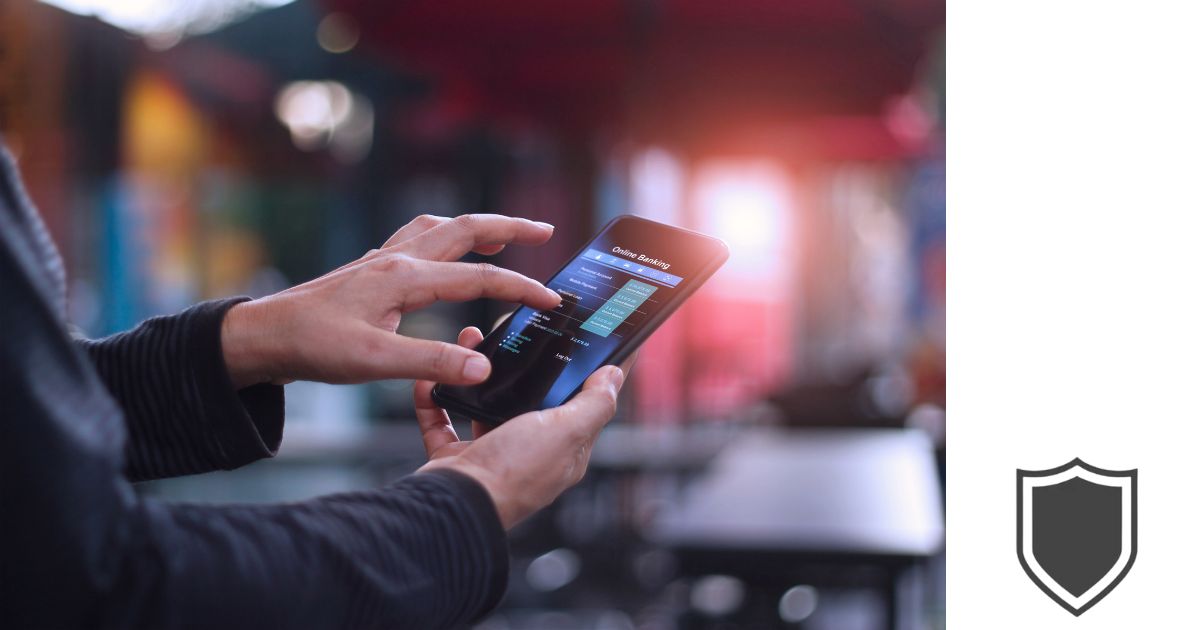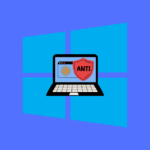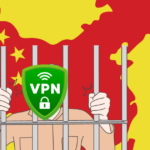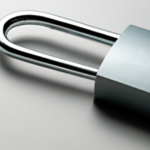In an era where our smartphones have become essential instruments, a critical question arises: “How safe is it to conduct online banking via a mobile device?” Our reliance on these convenient devices continues to grow, but with such convenience, concerns about security often surface.
Through “Pocket Banking,” we’ll embark on a journey to uncover the truth about mobile banking safety. From the encryption protocols to the risks of public Wi-Fi networks, we’ll dissect every aspect to ensure that your digital wallet is just as secure as its physical counterpart.
So, before you next tap to transfer or swipe to pay, let’s dive into the world of mobile banking security. Let’s make sure your money is safe every time it leaves your pocket.
Table of Contents
Understanding Basics of Online Banking
When it comes to online banking, I always prioritize security and convenience. With the rise of mobile banking, numerous concerns about its safety come up. However, experts do say that mobile devices might be safer than computers for this purpose.
To get started with online banking on a mobile phone, the first step is downloading my bank’s official mobile app. These apps usually come with a range of features, including checking account balances, paying bills, transferring money, and even depositing checks.
To ensure the security of my information when using a mobile banking app, I make sure to:
- Use a strong and unique password, encompassing a combination of uppercase and lowercase letters, numbers, and symbols.
- Enable two-factor authentication (2FA) for an extra layer of protection.
- Update the app and my phone’s operating system regularly, as these updates often address security vulnerabilities.
While mobile banking is generally considered safe, there are still potential risks, such as hacked Wi-Fi networks and data breaches. To avoid those risks, I take the following precautions:
- Avoid using public Wi-Fi when accessing my banking app, and if necessary, use a virtual private network (VPN) to encrypt my connection.
- Keep an eye on my account activity and report any unusual transactions to the bank immediately.
Security Measures in Mobile Banking

As someone who often uses mobile banking, I understand the importance of strong security measures. In this section, I’ll discuss two key safety features that many banking apps have in place: Two-Factor Authentication and Encryption.
Two-Factor Authentication
I find that one of the most essential security features in mobile banking is Two-Factor Authentication (2FA). This method requires two separate pieces of information to verify my identity before granting access to my account. This usually consists of:
- A password, which only I should know
- A unique, one-time code, typically sent to my registered mobile number or email address
By requiring two separate forms of verification, 2FA reduces the risk of unauthorized access to my account. Even if someone manages to get my password, they’ll still need the second piece of information, which drastically lowers the chances of a successful breach. I always make sure to use 2FA, especially in sensitive applications like mobile banking.
Encryption
Another vital security measure in mobile banking is encryption. It plays a significant role in keeping my personal and financial data safe from prying eyes. Encryption works by disguising sensitive information, such as my login credentials and bank statements, making them unreadable to anyone trying to intercept and decode them.
Banking apps use strong encryption algorithms to ensure that my data remains secure during transmission, as well as when it is stored on the app or the banking servers.
Common Threats in Online Banking
As we venture into the world of online banking on mobile devices, it’s important to discuss the potential security threats we may face. In this section, I will briefly cover some common threats in online banking with a focus on two sub-sections: Phishing Scams and Malware.
Phishing Scams
Phishing scams are among the most common tactics cybercriminals use to steal sensitive information, like bank account details and login credentials. They usually achieve this by sending convincing yet fraudulent emails or messages that redirect you to fake websites, designed to mimic those of legitimate organizations.
- Tip 1: To protect myself and my personal information, I always double-check the sender’s email address and avoid clicking on any suspicious links.
- Tip 2: It’s wise to enable two-step authentication for online banking accounts to add an extra layer of security.
Malware
Another threat that poses a risk to the security of online banking on mobile devices is malware, which may include viruses, worms, trojans, or spyware. Malware can potentially be installed on my mobile device without my knowledge, giving hackers virtually unlimited access to my sensitive information.
- Tip 3: To minimize the risk of malware infection, I ensure that I never download apps from untrusted sources and keep my mobile device up-to-date with the latest security patches.
- Tip 4: Installing a trusted antivirus app may also help detect and remove malware before it can compromise my personal information.
By being aware of these common threats, I can take proactive measures to protect my personal data and maintain the security of my online banking activities on my mobile phone.
How Safe is Online Banking on a Mobile Phone
It turns out, mobile devices may actually be safer than computers for online banking. Experts attribute this to the fact that malicious software can be downloaded to a computer without the user knowing it, whereas smartphones are less prone to this issue. However, it is crucial to keep some security measures in mind.
First, I make sure to choose strong and unique passwords for my online banking accounts. A complex password is less susceptible to hacking and keeps my financial information secure.
Secondly, I avoid using public Wi-Fi for banking purposes, as it can be risky. Cybercriminals may target these networks to intercept sensitive data like login credentials. So, I make sure I’m using a secure connection – either a private Wi-Fi or my mobile data – while banking on my phone.
Another essential habit is regularly updating my banking app and phone software. Updates usually include important security patches that help protect my information from potential threats.
Moreover, I keep an eye out for any suspicious emails or messages claiming to be from my bank. Phishing scams can be cleverly disguised, so I am always cautious about clicking on any links or providing any personal information. Instead, I prefer to access my banking app directly to confirm any requests.
Finally, being aware of app-based banking Trojans is necessary. These malicious apps hidden in unrelated ones, like games or tools, can target mobile banking users. To avoid falling victim to such threats, I only download reputable apps from official app stores.
Preventative Measures Users Can Take
As someone who uses online banking on my mobile phone, I’ve realized that there are several steps that I can take to ensure the safety of my banking information. Some of the key preventative measures include using verified apps, performing regular updates, and connecting only to secure Wi-Fi networks.
Use of Verified Apps
One important step I’ve taken to ensure the safety of my online banking on a mobile phone is by using only verified apps. These apps are available in official app stores, such as Google Play Store or Apple App Store, where they undergo strict security checks. By downloading banking apps only from these trusted sources, I know that my banking information is less likely to be compromised by malicious actors.
Regular Updates
Keeping my banking app and the operating system on my phone updated also ensures a high level of security for my online banking activities. Whenever there are new updates available, I make sure to install them promptly. These updates typically include essential security patches and bug fixes that help protect my sensitive banking information from potential cyber threats.
Secure Wi-Fi
Lastly, I am careful about the Wi-Fi networks I connect to while accessing my online banking app. I avoid using unsecured public Wi-Fi networks, as they may expose my banking information to hackers. Instead, I ensure that I only use my secure home Wi-Fi network or trusted networks with strong encryption to keep my data safe.
Role of Banks in Protecting Users
As a user of online banking on my mobile phone, I feel confident in the steps my bank takes to protect me. Let me share with you some of the ways banks ensure their users’ safety in the digital world.
Built-In Security Features
Firstly, banks have robust built-in security features for their mobile apps. For example:
- Encryption: Banks use high-level encryption to make our data unreadable to unauthorized parties.
- Two-Factor Authentication (2FA): Many banks require additional verification, like sending a text message or using a mobile app, to confirm our identity.
- Biometric Authentication: Some banks even utilize fingerprint, facial, or voice recognition to help ensure it’s really us logging in.
These features give me peace of mind that my information is safe when using my mobile phone for online banking.
Active Threat Detection
Another way banks protect us is through their active threat detection systems. Here’s how these work:
- Monitoring transactions: Banks constantly monitor our accounts for suspicious activity. If they detect something unusual, they notify us immediately.
- Anti-phishing measures: Banks educate their customers about phishing, and they use systems to detect phishing attempts targeting their users.
- Security updates: Banks are always working to improve the security of their apps by releasing regular updates, which guards against new threats.
Overall, as a user of mobile online banking, I find these safety measures reassuring. The banks are playing their part in ensuring that our information stays secure in the mobile digital world.
What to Do if Your Account is Hacked
Now, let me share what I should do to stop any damage and protect my account from future attacks.
First, I need to calmly review my account activity and verify any unauthorized transactions. I have to be cautious, as some legitimate transactions might seem fraudulent if companies are doing business under different names.
Once I’m sure that my account has been hacked, the next step is to immediately call my bank to report this. It’s important for me to act fast because the sooner I report the loss, the better chance I have of minimizing damage to my account. Most national banks, like Discover, have dedicated pages with contact information and tips on their websites for reporting fraud.
While I’m on the phone with my bank, I should also discuss the possibility of changing my login credentials. Choosing a strong, unique password is crucial for keeping my account secure. It’s a great time to evaluate my current password situation and make improvements if needed.
To prevent this situation from happening again, I must be vigilant about protecting my online information. Here are a few ways I can do that:
- Regularly check my account activity for anything unusual
- Be cautious when using public Wi-Fi networks for banking
- Keep my phone and banking app updated with the latest security patches
- Be cautious about clicking on suspicious links in emails or text messages
By taking these steps, I can minimize the chances of my account being hacked in the future and ensure the safety of my hard-earned money.
The Final Word
And there we have it, a comprehensive look into the world of mobile banking. It’s clear that while there are risks associated with managing your finances from your phone, the convenience and advancements in security technology make it a viable, safe option for most.
Remember, staying informed about the latest security measures, using strong passwords, and being cautious with public Wi-Fi are key to keeping your mobile banking experience secure. Just like you wouldn’t leave your physical wallet lying around, the same care should be extended to your digital banking.
With the right practices in place, you can enjoy the ease of pocket banking with peace of mind. Stay safe, stay smart, and happy banking!
How Safe is Online Banking on a Mobile Phone FAQs
Is it secure to use banking apps on a smartphone?
Yes, using banking apps on a smartphone is generally secure. In fact, experts like Kyle Marchini from Javelin Strategy & Research give bank apps on mobile devices the edge when it comes to safety. Just make sure you’re using the official app from your bank and keep it updated to ensure the highest level of security.
What safety measures should I take with mobile banking?
When using mobile banking apps, I recommend taking the following safety measures:
- Use strong and unique passwords.
- Enable multi-factor authentication if your bank offers it.
- Keep your phone’s software and apps updated.
- Avoid using public Wi-Fi for online banking; use cellular data or a secure home network instead.
- Do not respond to unsolicited emails, texts, or calls asking for your account information or password.
How do I ensure my phone is safe for online banking?
To ensure your phone is safe for online banking, be sure to:
- Keep your phone’s operating system up to date.
- Install reputable security apps to protect against malware and other threats.
- Use secure, encrypted apps for communication.
- Be cautious about which apps you download and install from app stores.
- Set a strong passcode, pattern, or biometric lock for your device.
Are there any risks associated with banking on a mobile device?
While mobile banking is generally safe, there are still risks associated with using a mobile device for banking. These risks include:
- Device theft or loss: If your phone is lost or stolen, someone could access your banking information.
- Malware and viruses: If your phone gets infected with malicious software, it could compromise your banking security.
- Phishing attempts: Scammers may try to get you to reveal sensitive information through social engineering.
- Public Wi-Fi vulnerabilities: Using an insecure network could expose your data to attackers.
Is using cellular data safer than Wi-Fi for online banking?
Yes, using cellular data is generally safer than using Wi-Fi for online banking. Public Wi-Fi networks can be compromised, making your data vulnerable to attackers. Cellular data networks are more difficult to hack, providing a more secure connection for online banking.
What are some best practices for mobile banking security?
Here are some best practices for mobile banking security:
- Use strong and unique passwords for your online banking accounts.
- Enable multi-factor authentication whenever possible.
- Monitor your accounts regularly for any suspicious or unauthorized activity.
- Be cautious about downloading third-party apps and ensure you’re using the official app from your bank.
- Keep your device updated with the latest software and app updates.
- Use a secure, encrypted communication app for any financial discussions or transactions.
- Amazon Email Phishing: How to Identify and Avoid Scams - May 11, 2025
- Malwarebytes vs McAfee: Decoding the Ultimate Antivirus Battle - May 11, 2025
- Best Antivirus for Windows 10: Expert Recommendations for 2023 - May 11, 2025









